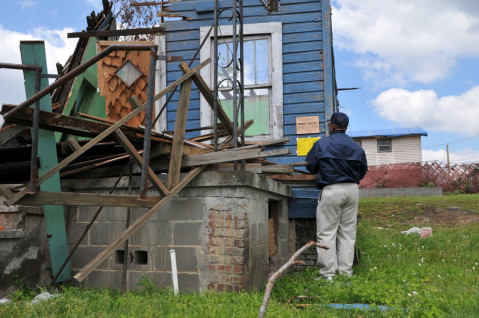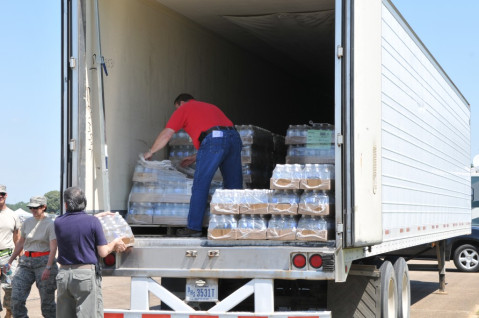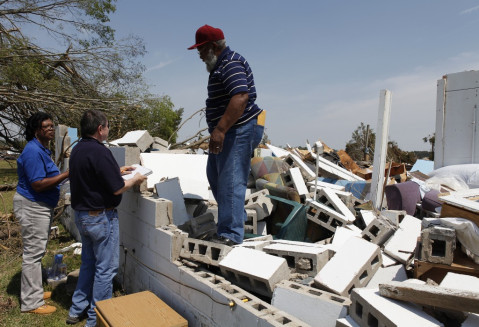Widgetized Section
Go to Admin » Appearance » Widgets » and move Gabfire Widget: Social into that MastheadOverlay zone
Purchasing with a Purpose: Proactive Public Procurement Important to Emergency Response and Recovery
To comment on or add to this discussion, either become a Registered Reader, by clicking the ‘Register’ link at the top right of this page, or email your comments in 700 words or less to [email protected].
Alexandru V. Roman, Schnequa N. Diggs
According to the National Oceanic and Atmospheric Administration’s (NOAA) preliminary estimates from May 8, 2011, the tornado outbreak of April 2011 is of record breaking proportions. NOAA estimates that from 8:00a.m. April 25 to 8:00a.m. April 28, 2011, there were observed 305 tornadoes. Eyewitness reports suggest that the count can be as high as 434. This eclipses the previous record of 148 tornadoes which occurred from April 3 to April 4, 1974. According to preliminary estimates total of 329 deaths are associated with this nature induced disaster, with Alabama suffering the most losses. According to NOAA the 24-hour-period from 8:00a.m. April 27 to 8:00a.m. April 28 is historically the 5th deadliest tornado with 309 fatalities.
The impacted regions also suffered heavy economic damages. Insurance commissioner Jim Ridling estimates that the damages would easily surpass $2 billion. As such the recovery and reestablishment of a new “normal” within the affected areas will take a coordinated effort on the part of governmental agencies as well as private companies. According to Alabama’s Governor Robert Bentley the state’s public-private collaborative efforts to reach a new “normal” are supported with over $1 million in a first wave of corporate donation. Blue Cross Blue Shield of Alabama and other insurers pledged $290,000; Walter Energy $250,000; BP $200,000; HealthSouth, $125,000; Great Southern Wood $100,000; AT&T, $75,000; Maynard, Cooper and Gale, $50,000; U.S. Steel, $50,000; State Farm Insurance, $50,000; Farmers Insurance, $50,000; Navistar, $50,000; Weyerhaeuser, $20,000; and Protective Life Insurance, $15,000. While this obviously not enough, it is a start.
It is difficult to make the case that there are reasonable pre-disaster measures or intervention strategies that could have been undertaken in order to significantly reduce the human and economic losses. Based on initial reports the response and recovery interventions have been effective and timely as well. While it can be argued that one cannot control the outcomes of natural disasters one can significantly improve the effectiveness of the recovery process by implementing a strategically proactive and collaborative approach, especially within areas that are not traditionally thought of as critical in terms of emergency response. One such area is public procurement. Purchasing with a purpose can be much more than it might appear at first.
While public procurement is not the first aspect one thinks of when it comes to the recovery process–the benefits of strategic and proactive procurement practices should not be underestimated. Christopher Atkinson in his paper “An Evaluation of the Impact of Local Government Institutions on Business Resilience in Disaster” presented at the 2011 Florida Atlantic University School of Public Administration’s Colloquium argues that the patterns and manner in which procurement is undertaken has a dramatic impact on the level of preparedness and the ability of disaster affected regions to reestablish a new “normal”.
Using data collected from respondents from New Orleans and Palm Beach areas as well as by deconstructing existing case studies he argues that procurement practices add significantly to the recovery process, especially by increasing local business resilience. Proactive procurement, expedited processing times and strategic procurement will offer the financial incentive and support for local businesses to reopen their doors and aid the recovery efforts, while they are reestablishing their operational capacity in the process as well. Reasonable and selective local procurement preferences within post-disaster areas will lead to a larger multiplier effect than if procurement is undertaken within a traditional efficiency prerogative only.
Judging by Alabama’s state procurement website–the state is well equipped to provide relatively fast processing times through available e-procurement practices; at the same time the state appears to understand the importance for the support of local preferences in the post-disaster short-run period.
However, our own current and ongoing research identifies two trends that might be corroding the gains of public procurement as a post-emergency recovery mechanism. According to our respondents, primarily due to budget pressures and political interests, within the past 10 years: 1) more municipalities are choosing not to maintain warehouses and are willing to increase their reliance on just-in-time procurement practices and 2) the procurement process is becoming increasingly reactive rather than proactive.
While the benefits of purchasing with a purpose within emergency response and recovery efforts might not be a politically or academically salient subject that does not mean that it is not critical. We argue that there is much to be lost from allowing public procurement to become purely reactive and from underestimating the importance of the multiplier effect within local collaborative efforts. The best price might not always be the lowest one.
ASPA members Alexandru V. Roman and Schnequa N. Diggs are doctoral students in the School of Public Administration at Florida Atlantic University. Emails: [email protected] and [email protected]







Follow Us!